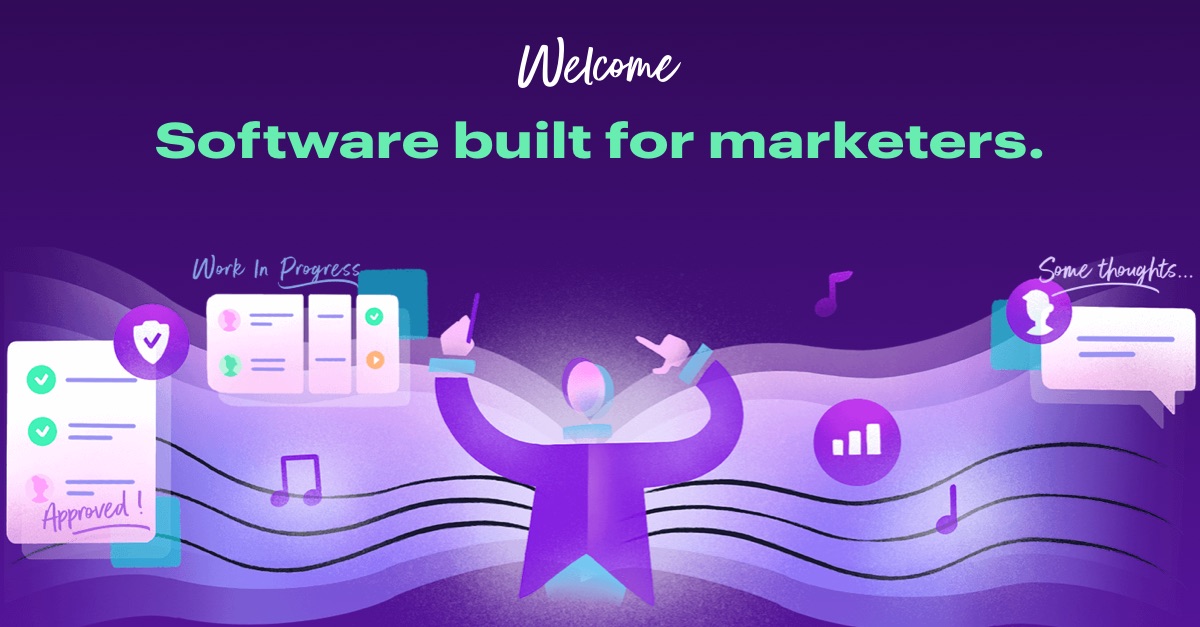
You can’t ignore mobile. Smartphones haven’t been a fringe luxury for years. According to Pew Research Center, 85% of Americans own a smartphone, which is more than the 75% who own a desktop or laptop computer. This means a lot of people are looking for your product on a very small screen. It means you have to have a mobile marketing strategy.
What are the Challenges of Mobile Marketing?
Mobile marketing brings with it a variety of challenges. The most obvious is ensuring that your website looks good on mobile devices, but this is far from the only issue.
The fact is that supporting the mobile experience goes far beyond that.
Mobile marketing is not a channel but is rather a set of marketing channels that deploy to your customers’ and prospective customers’ devices.
So, the first part of an effective mobile marketing strategy is to work out which of these channels are going to be most effective for accessing your target audience.
You need to make sure that your marketing efforts are properly targeted and coordinated across some or all of the mobile channels for the best effect.
What are These Channels and Techniques?
Mobile marketing consists of a variety of channels and marketing techniques. Some of these are shared with desktop and other digital marketing, while others are unique to the mobile world. They include:
- Content marketing
- App marketing
- Push notifications
- Mobile advertising
- Search engine optimization (SEO), including voice search
- SMS marketing
- Social media
Each of these can reach a slightly different demographic and has to be handled differently.
For example, SMS marketing is easy to overdo, resulting in somebody being put off your company rather than seeking you out. In fact, you should generally reserve it for further down the funnel.
So, what is your top to bottom strategy? Obviously, this depends on your industry, target audience, and overall goals, but here is a run-through.
Brand Awareness
Obtaining brand awareness through mobile is relatively easy. People, these days, spend a lot of time on their phones. There are some things you can consider, depending on your needs.
Google Maps/Apple Maps is vital for businesses with a brick-and-mortar presence, especially ones people tend to visit spontaneously, such as restaurants.
Make sure to claim your Google My Business listing so that the majority of smartphone owners (who use android phones) will see your business’ accurate information, such as phone number, when they do a search.
This can get you both awareness and if you are lucky, immediate conversion.
Ideas for Your Brand Awareness
Hyperlocal marketing, where push notifications are sent to mobile phones when people are right outside your business is a new thing that is starting to take off, although it does bring with it certain privacy concerns.
Geofencing can also save you money on mobile advertising by only sending your ad to people to whom your business is convenient.
App marketing is also a good idea for brand awareness. As long as it is done with an awareness of targeting, video ads included within smartphone apps can attract a large number of potential customers.
These ads are typically not skippable and are included with free applications. While they can be expensive to produce for small businesses, short video ads on mobile are highly noticeable.
They are most likely included with games, which does not necessarily mean targeting younger people. The kind of games that contain these ads are casual ones, often played by people during a brief break from work.
Social media ads are often sent to phones, but the two biggest phone-specific channels are Instagram and TikTok. Younger consumers tend to use TikTok.
You can manage Instagram ads through Facebook, while TikTok requires a different interface. This gives you similar advantages in targeting using social media ads on Facebook.
Finally, make sure that your overall digital marketing strategy is fully mobile-friendly. Choose advertising networks that also send to mobile and make sure they do it properly.
As with other channels, brand awareness is about reaching your potential customers where they already are and that means doing the research to know which demographics use which apps and which social media networks.
Consideration
What happens when somebody clicks on your mobile ad? First of all, you need a mobile-specific landing page.
This page needs optimization to look good on both smartphones and tablets. It will also help with your analysis by recording how many people come to your website from your mobile advertising.
Smartphone users will then expect a good experience on your website. One key factor is page load speed. Google recommends ensuring that your page load speed is no more than 5 seconds on devices using 3G.
If they have a bad experience, 62% of them won’t come back. You will lose a lot of prospects at the consideration phase.
If they find themselves on a desktop site, then…you’ve pretty much lost them. Make sure you take them to a mobile-friendly site with a responsive design that adapts to their device.
Another thing that can happen at this stage is that they will follow your social media. This is when Instagram or TikTok become very valuable.
It requires a certain amount of special skill to fully leverage these highly-visual platforms. You need to take a lot of pictures and record a lot of videos. However, it’s well worth it.
At this point, you are in the content marketing phase. Make your feed interesting and fun.
Most people are not going to read your blog on their phones, so you need striking images that contain information. You need videos. Long-form content is best kept for sites intended to be accessed from desktops.
Positive interactions with customers through these sites and through Facebook can also help at the consideration stage.
Conversion
Conversion depends a lot on your business type. For example, we already used the example of a restaurant.
When people search on mobile for a restaurant they are typically looking for someplace to eat right now. So the process tends to use the Maps app, look at reviews, read the menu, choose a restaurant.
For our hypothetical restaurant, in fact, the most important thing for both consideration and conversion is to make sure that your menu can easily be read on a phone. It’s a quick process.
For other businesses, the conversion will still happen after a lengthy series of interactions. However, people on mobile are more likely to be in a place where they will impulse buy. So this tends to shorten the funnel.
One basic thing to check and ensure is that your e-commerce store works on mobile. Not everyone checks this.
Taking Google Pay and Apple Pay can also help, allowing people to order and pay right then and there. Make sure that your site gives a good mobile experience when selecting and purchasing products.
Again, this can’t be just making sure your desktop site looks okay on mobile. You need a mobile site that has less text, fewer steps during checkout, a top navigation menu, etc.
Also, if you use video and animations, consider doing them vertically (portrait mode) when you can so people don’t have to turn their phones to watch them. It’s a little thing that can make people feel much more catered to.
Using Augmented Reality
The next level is the potential use of augmented reality. For example, a clothing store might have the ability for somebody to take a photo of themselves and then see how they will look in the outfit or item they are considering buying.
Augmented reality is relatively new. But it is starting to take off and is very much in a watch this space mode right now.
Loyalty
At the loyalty phase, mobile continues to play a role. This is one place where SMS marketing can come in.
People will get annoyed with a lot of text messages. But an occasional one or two informing them of a deal or a new product will not turn off a satisfied customer.
Make sure that you have a very clear CTA on your mobile site to encourage them to sign up for your email marketing list. Keep marketing emails short and highly visual, which will work well on both desktop and mobile.
While expensive, having your own mobile app can make a difference. Some companies, for example, have started to put their loyalty programs in apps that then generate a QR code that the cashier can scan to verify eligibility for the reward.
If you do use an app, make sure it is lightweight and won’t take up a lot of room on their phone and that it adds something of value. Have it made for both of the major operating systems and test it on both tablets and phones.
Communication through your social media channels remains a key component of loyalty, but don’t forget those mobile-focused channels.
Your loyal customers are the ones who need to see the pictures of your new or limited-time product. They’re the ones who need to know about a discount.
At the speed of mobile, flash sales, which are advertised for a short period of time on social media, can be particularly effective.
They are more likely to attract existing customers than new ones, and the fact that your loyal customers will see them first makes them feel appreciated. Rewarding loyalty always improves retention and can lead people to advocacy in a natural way.
Advocacy
This all leads into the advocacy phase. You want your advocates to share your stuff on mobile, which is where those social media platforms come in.
Make a particularly entertaining Instagram post or TikTok video and you may find you get advocacy from people who aren’t even your customers. However, you can never plan on something going viral.
Instead, make sure you create content that your loyal customers will want to share. Whether it’s a picture of your cat or a funny video in the store, make sure it is things that they will pass around.
A common mistake is to only post stuff that is very serious. Mobile marketing works better when it is a little bit tongue in cheek and is trying to be fun. Remember that advocacy feeds back into brand awareness.
You just want people to tell you are there and you are great, not necessarily spread a lot of information about you.
However, do remember the importance of reviews and make sure that you steer your mobile customers to review places where people will see them. Google reviews are particularly helpful here as the overall rating shows up right when they search for your location in Google Maps.
Mobile marketing aside, the thing which leads to the most loyalty and advocacy, however, is still providing a good customer experience. You can have the best mobile-friendly website in the world, but if you don’t give people a great experience?
If you don’t give people a great experience, they will never advocate for you.
Analyzing Your Mobile Marketing Plan
All of this is great, but how do you know it’s working? The metrics for mobile marketing are much the same as for other marketing strategies.
You need a good marketing tool that can help you ensure that your carefully worked out mobile marketing campaign is in fact doing what you need it to do.
Your mobile-specific landing page is a big part of this, helping make sure that you track the effectiveness of your ads. You can then follow them through to the conversion, although bear in mind that most people will check out a site more than once before committing.
Keep your mobile advertising campaigns separate and make sure to track them as separate parts of your overall strategy so you can better compare mobile with a desktop with other advertising methods such as radio or print.
Designing and analyzing your mobile marketing requires real-time data and monitoring open rates, conversion rates, etc. For this, you need the right marketing platform.
Welcome supports multi-channel digital marketing, including mobile. Our campaign planning & execution capabilities are exactly what you need to create, share, and organize your plan.




